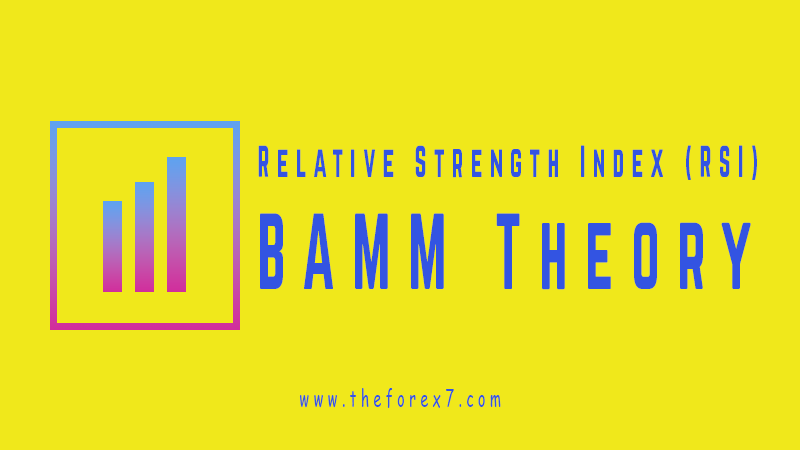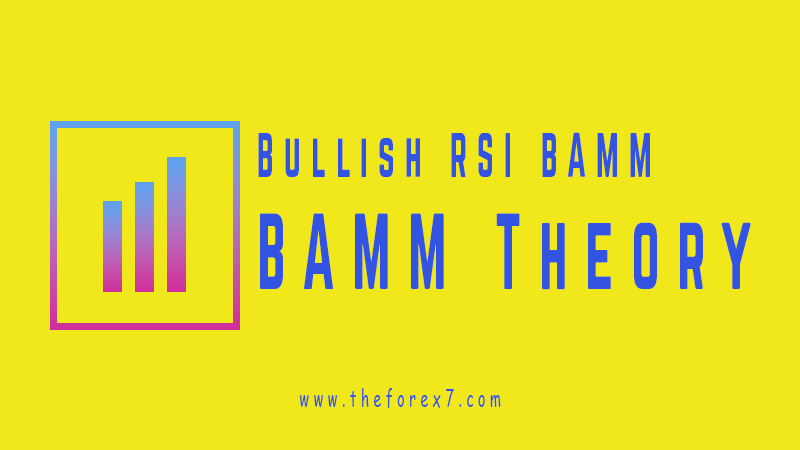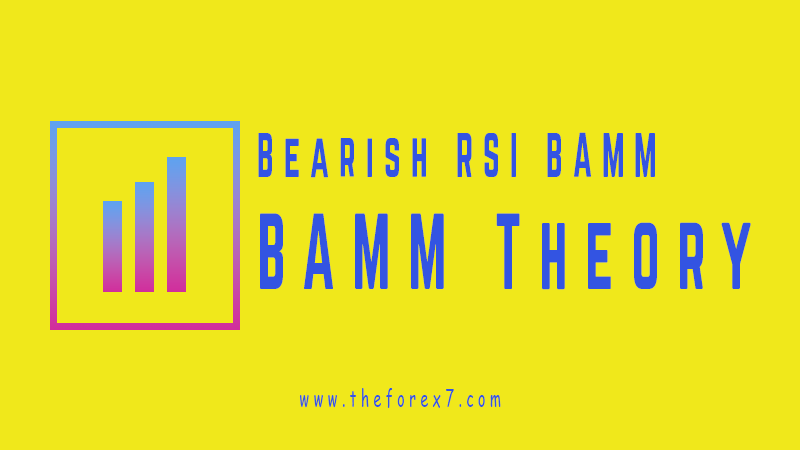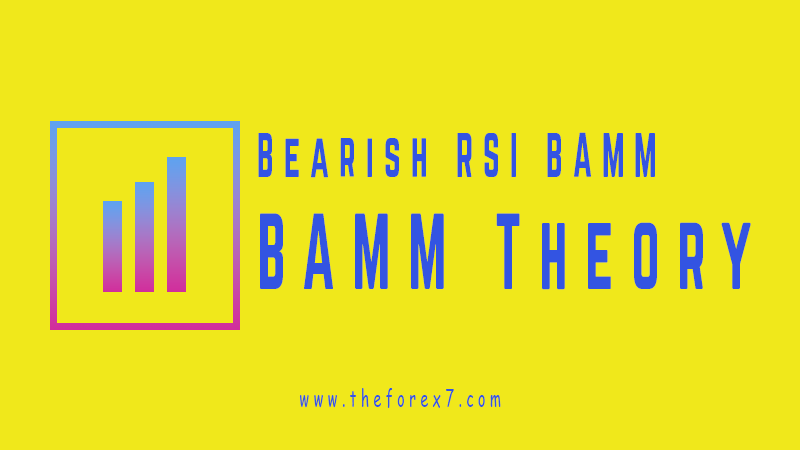BAMM Theory: RSI BAMM, Final review, Harmonic Trading
Final review of BAMM, Tips for RSI BAMM, Conclusion for RSI BAMM, Harmonic Trading Tips
Course: [ HARMONIC TRADING : Chapter 6: RSI : Relative Strength Index (RSI): BAMM Theory ]

The RSI BAMM represents a significant evolution in the Harmonic Trading approach. The integrative strategies embodied within the RSI BAMM clearly demonstrate effectiveness of multiple confirmation techniques to define trade opportunities.
FINAL RSI BAMM REVIEW
The
RSI BAMM represents a significant evolution in the Harmonic Trading approach.
The integrative strategies embodied within the RSI BAMM clearly demonstrate effectiveness
of multiple confirmation techniques to define trade opportunities. Although
others—including Welles Wilder himself—have presented research that discusses
the basic concepts of divergence as it relates to Relative Strength, I believe
that this technique that incorporates harmonic measurement strategies is the
most precise means of quantifying this technical phenomenon. In fact, the
inclusion of harmonic patterns to act as structural signals to further refine
these divergent situations presents an immensely accurate system that
quantifies precise technical levels of potential harmonic support and
resistance in an unprecedented fashion.
Since
discovering the RSI BAMM, the price zones of support and resistance that
incorporate both the RSI and PRZ measurements have immensely improved the basic
pattern identification techniques. These unprecedented strategies advance the
basic tenets of the Harmonic Trading approach to define unique situations where
harmonic pattern completions are especially significant.
The
RSI BAMM includes the following steps:
Step 1: Initial Test of the
Extreme RSI Limit
Step 2: Complete M- or W-Type
Complex RSI Structure
Step 3: Define the RSI Trigger
Bar
Step 4: Assess Reaction of RSI
and Price
Step 5: The Final
Phase—Divergence of RSI Versus Price
Step 6: RSI BAMM Confirmation
Point: 1.13 Versus 1.618
Step 7: Pattern Completion at the
RSI BAMM Confirmation Point
Although
each step must be assessed carefully, this approach clearly defines the
required elements to validate the RSI BAMM conditions. Although the pattern
completion is the last step in the process, the integration of the PRZ and the
RSI BAMM Completion Point is dependent upon each of the prior steps to be
satisfied to trigger this technical phenomenon. These requirements must be met
before any pattern can be considered to define a trade opportunity. It is
important to review some of the most critical elements of the RSI BAMM.
RSI BAMM TIPS
- Look for the Extreme RSI Complex indicator reading to initiate the setup.
- Look for the initial reaction of the complex RSI reading to retest the 50 limit reading at a minimum before completing the Confirmation Point.
- Wait for the divergence of RSI and price, as long as the impulsive RSI retest of the extreme limit does not exceed the reading of the prior complex structure.
- The execution of the trade is triggered at the completion of the relative harmonic pattern that completes at the appropriate RSI BAMM extension level.
- The Acceleration Trigger provides an extremely effective final confirmation signal when it develops following the RSI BAMM Confirmation Point.
The
concept of divergence is quantified effectively by the RSI BAMM approach. As a
trader, I am constantly analyzing charts, looking for the best opportunities
that signal a significant change in the primary trend. The combination of the
RSI BAMM approach with the completion of harmonic patterns creates a unique
divergent situation that defines immensely accurate trading opportunities.
Although these strategies may take some time to integrate into your current
trading plan, the advanced techniques represent a substantial advancement of
the entire Harmonic Trading approach and serve to filter the best pattern
completions. In the years to come, I firmly believe that the RSI BAMM and the
other advanced strategies presented in this book will go a long way in helping
you to turn patterns into profits—because that’s what this game is all about!
CONCLUSION
Harmonic
Trading: Volume Two represents my most comprehensive research to date. The new
patterns and trading strategies, especially the RSI BAMM, take the Harmonic
Trading approach to a new level. These strategies refine the existing approach
presented in my first two books. Volume Two incorporates new measurement
techniques, providing more accurate technical information and optimizing trade
decisions. Although these concepts include new elements to define harmonic
price behavior, this analysis still adheres to the primary tenets of the
Harmonic Trading approach of pattern recognition as quantified by Fibonacci
ratios. Although this material encompasses new technical measures, the same
analytical process is applied to identify harmonic price behavior.
IS THIS REALLY HARMONIC TRADING?
Despite
the effectiveness of the RSI BAMM, you might be asking: “Is this really Harmonic Trading?” To
answer this, we need to ask the proverbial question: “What is Harmonic Trading?” The answer is
“Harmonic Trading is a methodology that utilizes the
recognition of specific structures that possess distinct and consecutive
Fibonacci ratio alignments that quantify and validate harmonic patterns. These
patterns calculate the Fibonacci aspects of these price structures to identify
highly probable reversal points in the financial markets.…
The identification of historically repetitive price patterns is the primary means that these techniques utilize to interpret the market’s signals. It is in this effective price pattern identification ability that Harmonic Trading possesses its greatest advantages. The precision and accuracy of the specific pattern alignments define a consistent and effective approach that can be easily applied. Furthermore, each distinct pattern acts as a model for the basis of all trading decisions. Once a potential pattern is identified, the trading opportunity can be managed according to a defined set of rules that are particular for each situation. Although each pattern possesses different elements, Harmonic Trading does identify specific repetitive situations within the chaos of the financial markets.”
In
essence, the techniques in Volume Two utilize pattern recognition and Fibonacci
ratios to define unique technical support and resistance levels. Although the
analysis in this material addressed indicator structures and employed new
patterns to define harmonic price behavior, the measurement tools are
consistent with the Harmonic Trading methodology.
WHAT’S MORE IMPORTANT: RSI BAMM OR HARMONIC PATTERNS?
Without
a doubt, the strategies presented in this material—in particular, BAMM Theory
and the RSI BAMM—are practically a trading system unto themselves. This could
be a costly fact for me to mention. Why trade harmonic patterns when the RSI
BAMM works so well on its own? There’s no doubt that both harmonic price
pattern recognition strategies and the RSI BAMM approach can be effective in
their own right. But their true effectiveness can be seen when they work in
concert with each other. When techniques of multiple approaches come together
and yield the same result, the probability for a successful trading opportunity
is extremely high.
Harmonic
patterns represent the starting point for the entire methodology. The effective
measurement techniques presented in my first two books offered a comprehensive
system that effectively deciphered price action and determined trade
opportunities. However, the material within Volume Two identifies an
unprecedented technical situation where both the RSI and the pattern completion
converge to identify an extremely precise trading opportunity. Again, this is
where the confirmation of multiple technical methods gives a much greater
probability of a valid reversal and possibly a more significant move. Despite
this “dual
approach,” I must emphasize that patterns
are still more critical within the Harmonic Trading approach than the RSI BAMM.
In fact, I would not recommend executing an RSI BAMM setup without a pattern.
As
my research has continued through the years, the advantage of defining specific
“technical
entities” such as the RSI BAMM within
the context of harmonic price behavior has yielded consistently reliable
information regarding the potential state of future price action. When harmonic
patterns develop in specific technical situations, their completion typically
represents a critical point within the predominant trend. This specification
improves the overall comprehension of the price action and creates a defined
system to identify valid trade opportunities. Therefore, it is always important
to be as precise as possible.
In
closing, I want to thank you for taking the time to study this material. I
truly believe that these unprecedented strategies are extremely effective in
discovering the most profitable trading opportunities. In my opinion, the material
in this book represents the most significant advancement of the entire Harmonic
Trading approach since its inception, as well. Finally, I hope that these new
ideas are embraced within the field of Technical Analysis as widely as the
initial concepts of this approach have been accepted.
HARMONIC TRADING : Chapter 6: RSI : Relative Strength Index (RSI): BAMM Theory : Tag: Harmonic Trading, Stock Market : Final review of BAMM, Tips for RSI BAMM, Conclusion for RSI BAMM, Harmonic Trading Tips - BAMM Theory: RSI BAMM, Final review, Harmonic Trading




